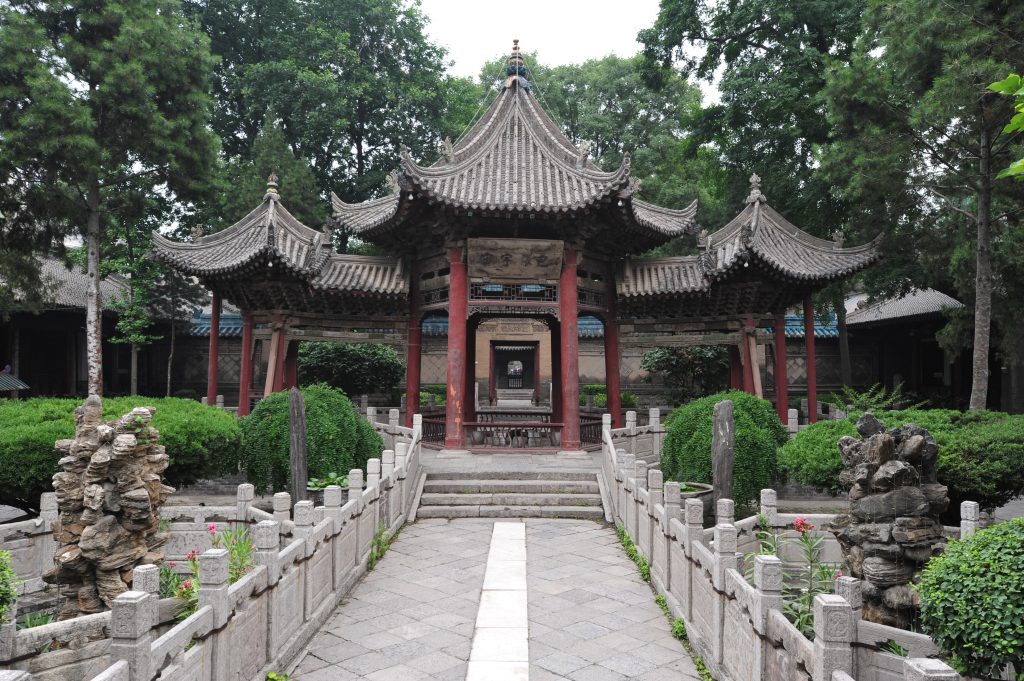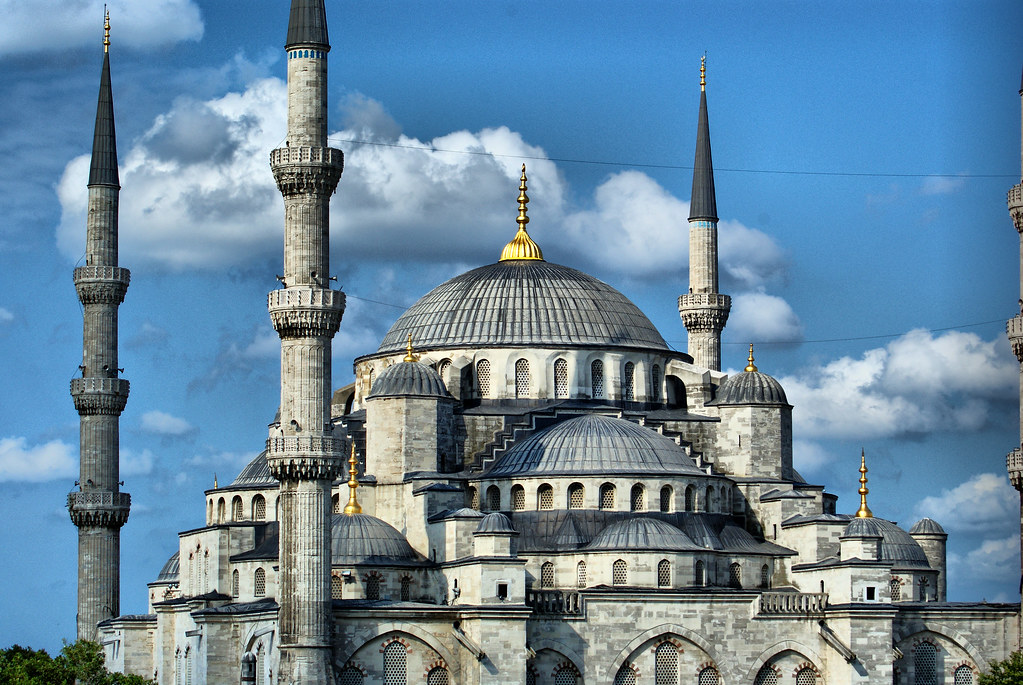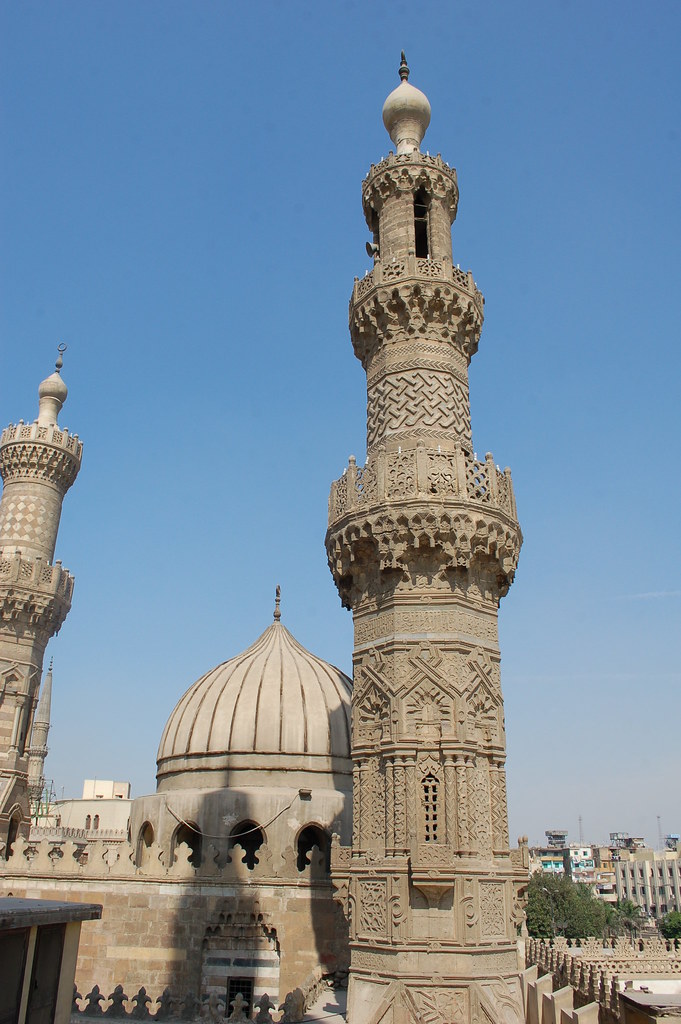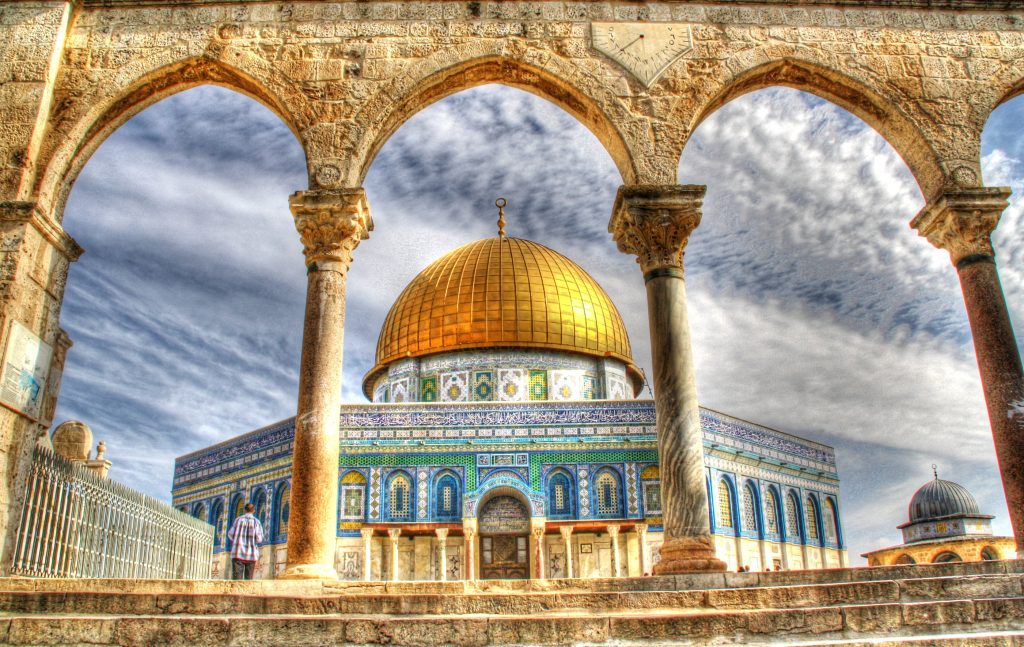Chapter 12.11: Islamic Art

What is Islamic art?
The Dome of the Rock, the Taj Mahal, a Mina’i ware bowl, a silk carpet, a Qur’an—all of these are examples of Islamic art. But what is Islamic art?
Islamic art is a modern concept created by art historians in the 19th century to facilitate the categorization and study of the material first produced under the Islamic peoples that emerged from Arabia in the seventh century.
Today, the term Islamic art describes all of the arts that were produced in the lands where Islam was the dominant religion or the religion of those who ruled. Unlike the terms Christian art, Jewish art, and Buddhist art—which refer only to religious art of these faiths—the term Islamic art is not used merely to describe religious art or architecture but applies to all art forms produced in the Islamic world.
Thus, the term Islamic art refers not only to works created by Muslim artists, artisans, and architects or for Muslim patrons. It encompasses works created by Muslim artists for patrons of any faith, including—Christians, Jews, or Hindus—and the works created by Jews, Christians, and others living in Islamic lands for patrons, Muslim and otherwise. One of the most famous monuments of Islamic art is the Taj Mahal, a royal mausoleum, located in Agra, India. Hinduism is the majority religion in India; however, because Muslim rulers, most famously the Mughals, dominated large areas of modern-day India for centuries, India has a vast range of Islamic art and architecture. The Great Mosque of Xian, China, is one of the oldest and best-preserved mosques in China. First constructed in 742 CE, the mosque’s current form dates to the 15th century CE and follows the plan and architecture of a contemporary Buddhist temple. In fact, much Islamic art and architecture was—and still is—created through a synthesis of local traditions and more global ideas.

Islamic art is not a monolithic style or movement; it spans 1,300 years of history and has incredible geographic diversity—Islamic empires and dynasties controlled territory from Spain to western China at various points in history. However, few, if any, of these various countries or Muslim empires would have referred to their art as Islamic. An artisan in Damascus thought of his work as Syrian or Damascene—not as Islamic.
As a result of thinking about the problems of calling such art Islamic, certain scholars and major museums, like the Metropolitan Museum of Art, have decided to omit the term Islamic when they renamed their new galleries of Islamic art. Instead, they are called “Galleries for the Art of the Arab Lands, Turkey, Iran, Central Asia, and Later South Asia,” thereby stressing the regional styles and individual cultures. Thus, when using the phrase Islamic art, one should know that it is a useful but artificial concept.
In some ways, Islamic art is a bit like referring to the Italian Renaissance. During the Renaissance, there was no unified Italy; it was a land of independent city-states. No one would have thought of themselves as an Italian, or of the art they produced as Italian. Rather, a person would have self-identified as a Roman, a Florentine, or a Venetian. Each city developed a highly local, remarkable style. At the same time, there are certain underlying themes or similarities that unify the art and architecture of these cities and allow scholars to speak of an Italian Renaissance.

Themes
Similarly, there are themes and types of objects that link the arts of the Islamic world together. Calligraphy is a very important art form in the Islamic world. The Qur’an, written in elegant scripts, represents Allah’s—or God’s—divine word, which Muhammad received directly from Allah during his visions. Quranic verses, executed in calligraphy, are found on many different forms of art and architecture. Likewise, poetry can be found on everything from ceramic bowls to the walls of houses. Calligraphy’s omnipresence underscores the value that is placed on language, specifically Arabic.

Geometric and vegetative motifs are very popular throughout the lands where Islam was once or still is a major religion and cultural force, appearing in the private palaces of buildings such as the Alhambra, in Spain, as well as in the detailed metal work of Safavid Iran. Likewise, certain building types appear throughout the Islamic world: mosques with their minarets, mausoleas, gardens, and madrasas—religious schools—are all common. However, their forms vary greatly.
One of the most common misconceptions about the art of the Islamic world is that it is aniconic; that is, the art does not contain representations of humans or animals. Early examples of religious art and architecture, such as the Dome of the Rock and the Aqsa Mosque—both in Jerusalem)—and the Great Mosque of Damascus—built under the Umayyad rulers—did not include human figures and animals. However, the private residences of sovereigns, such as Qasr ‘Amra and Khirbat Mafjar, were filled with vast figurative paintings, mosaics, and sculptures.
The study of the arts of the Islamic world has also lagged behind other fields in art history. There are several reasons for this. First, many scholars are not familiar with Arabic or Farsi—the dominant language in Iran. Calligraphy, particularly Arabic calligraphy, as noted above, is a major art form and appears on almost all types of architecture and arts. Second, the art forms and objects prized in the Islamic world do not correspond to those traditionally valued by art historians and collectors in the Western world. The so-called decorative arts—carpets, ceramics, metalwork, and books—are types of art that Western scholars have traditionally valued less than painting and sculpture. However, the last fifty years has seen a flourishing of scholarship on the arts of the Islamic world.

Media Attributions
- Figure 1. Taj Mahal, 1632-1648 CE, white marble (Agra, India; Image source: David Castor via Wikimedia Commons) is licensed under a Public Domain license
- Figure 2. Xi’an: Huajiao Lane Mosque: Yizheng Ting, built in 1368-1644 (Image source: Chensiyun via Wikimedia Commons) is licensed under a CC BY-SA (Attribution ShareAlike) license
- Figure 3. Sultanahmet Camii “Blue Mosque”, 1609-1617, view of the minarets from the courtyard arcade showing the mosque and the sadirvan (fountain) (Istanbul, Turkey; Image source: David Spender via Flickr) is licensed under a CC BY (Attribution) license
- Figure 4. Minarets of Al-Azhar Mosque, Cairo, Egypt (photo: Ahmed Al.Badawy Alt text: Image of the Minarets of Al-Azhar Mosque in Cairo Egypt. al-Azhar Mosque, Minarets, Carved masonry/stone relief. (Cairo, Egypt; Image source: Geson Rathnow via Flickr) is licensed under a CC BY-NC-SA (Attribution NonCommercial ShareAlike) license
- Figure 5. The Dome of the Rock (Qubbat al-Sakhra), Umayyad, stone masonry, wooden roof, decorated with glazed ceramic tile, mosaics, and gilt aluminum and bronze dome, 691-2, with multiple renovations.The mosque was built from 688 to 691 AD; exterior mosaic was repaired in the Mamluk period (1244 – 1510), and then completely replaced in 1545. The parapet wall with its inscription is contemporary; the tiling was replaced again between 1956 – 1962 (Jerusalem, Israel; Image source: Patrick McKay via Flickr) is licensed under a CC BY-NC (Attribution NonCommercial) license
Candela Citations
- Arts of the Islamic world. Authored by: Dr. Elizabeth Macaulay. Provided by: Smarthistory. Retrieved from: https://smarthistory.org/arts-of-the-islamic-world/. License: CC BY-NC-SA: Attribution-NonCommercial-ShareAlike

